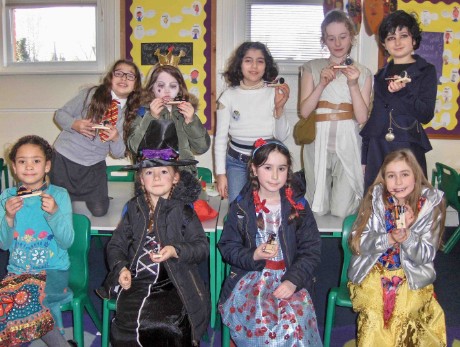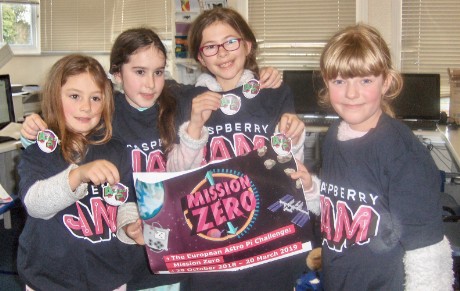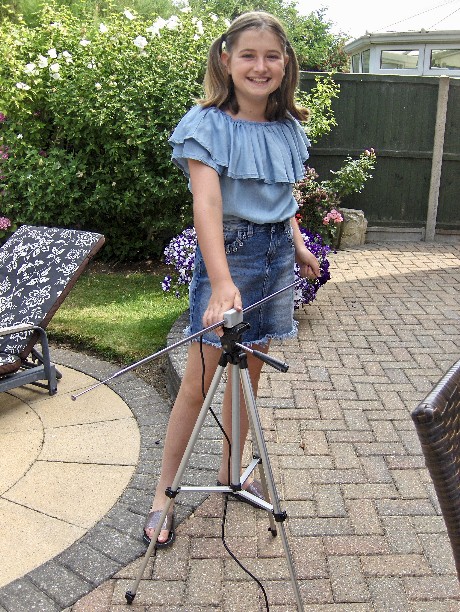News Page 4
This page contains all the latest news about school amateur radio clubs. Please contact us to add your SARC news to this page. Send us a picture and description of your SARC activities. Remember to get parental permission to publish student photographs on this site and in our newsletters.
SARCNET on TV
School Amateur Radio Club students from St. Kevin's Primary School in Ormond, Victoria were featured on Channel 10 Eyewitness News. Weatherman Mike Larkin hosted the segment and spoke to the children. Top SARC students Phoebe and Juliette presented their Amateur Radio and Electronics Workshop activities.
On display from left to right were: Amateur Radio Direction Finding, Emergency VHF/UHF FM radio set, Morse code practice set, Yaesu FT-817 all mode transceiver, copies of Amateur Radio magazine with St. Kevin's SARC students on the front cover, robotics workshop autonomous 4WD vehicle, electronics workshop prototyping boards, QSL cards; a collection of the student's "OWLS in the Library" projects, including: OWL Flasher, OWL Traffic Lights, OWL Dice, OWL Christmas Tree, OWL Radar, OWL Scanner and OWL Detector; lead-free soldering workshop, Mini Satellite Ground Station, ARDF beacon and VHF/UHF hand-held radios. Good to see everyone wearing their SARCNET badges. Well done guys!
Prior to the program going to air, Mike Larkan really entertained the children and he had a few wise words to share with them at the end of the segment - worth listening to. The Channel 10 Producer's final words to Mike over his earpiece were "The best school ever!" Wow. Congratulations to the parent's, staff and students of St. Kevin's Primary School Ormond.
Watch a YouTube Video of the segment and subscribe to our SARCNET YouTube channel to keep in touch with future events.
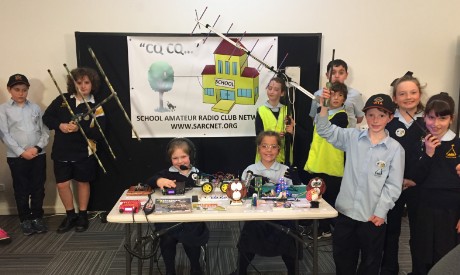
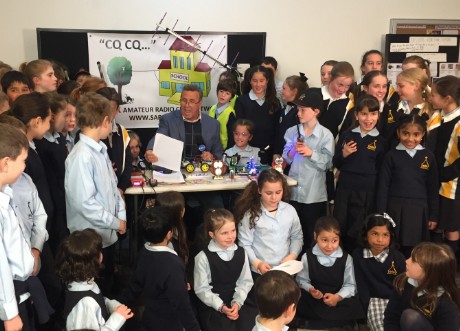
SARCNET @ GippsTech 2018
GippsTech is Australia's premier Amateur Radio technical symposium, held every year in July at Churchill in Gippsland, Victoria. This was the 21st annual event and the fourth year that SARCNET has presented to the group. Each year we have provided three presentations on our projects or program and a number of working demonstrations. This year was no different. We demonstrated our Mk3 and Mk4 rotators with our Mini Satellite Ground Station software, as well as our Raspberry Pi SDR Receiver and Transmitter Modulation Monitor projects.
The Amateur Radio for Kids presentation covers the topics:
- Why should AR be interested in kids?
- What does AR have to offer kids?
- What do kids love about AR?
- What AR operators can do for kids?
- What AR clubs can do for kids?
- What the WIA can do for kids?
It provides some needed motivation to address the shortage of young radio and electronics enthusiasts among the aging ranks of the Amateur Radio fraternity and it highlights the worthwhile contribution that AR can achieve by getting kids into STEM. The message was simple: If AR clubs do not put a priority on youth programs they just won't be around in 15 years. A more positive, sustainable and rewarding view is that AR clubs have a lot to offer and kids have a lot to benefit from getting involved in radio and electronics. It is the classic win-win situation.
The wider view is that the WIA should establish national guidelines for AR club youth programs and setting up School Amateur Radio Clubs. If you are involved in a club and thinking about establishing a youth program please do not hesitate to get in touch. We have free resources and advice to get you started.
The Mini Satellite Ground Station presentation covers the design of our new Mini Satellite-Antenna Rotators Mk3 and Mk4. These provide an all-in-one solution for tracking all types of satellites during school lunchtimes.
The Build your own SDR presentation covers the use of GNU Radio Companion to build SDR projects with the help of an RTL-SDR dongle.
The GippsTech crew comprises some of the most active and talented Amateur Radio experimenters in Australia with a huge focus on Microwaves, EME and Digital Signal Processing.
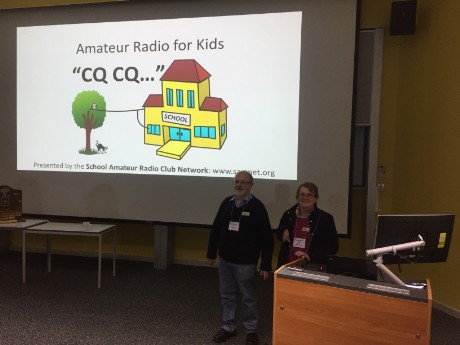
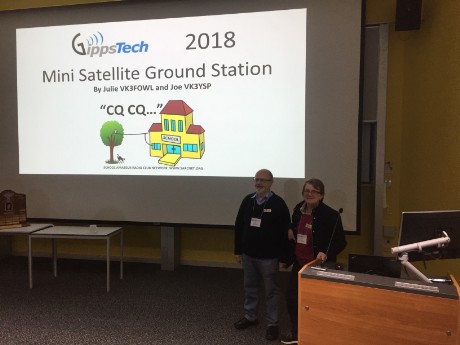
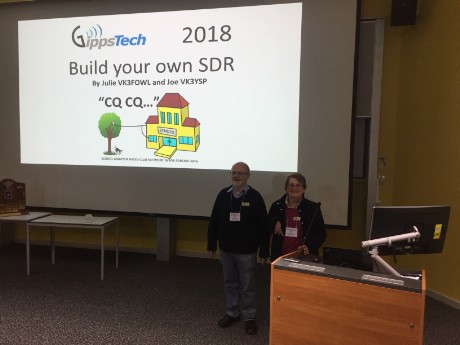
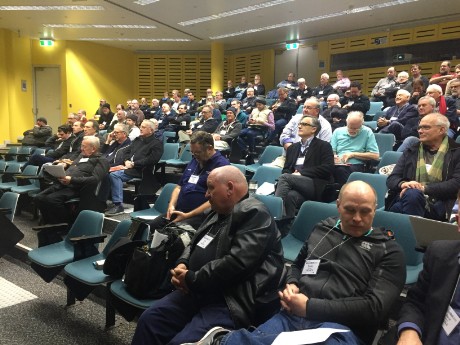
SARCNET @ SERG
The South East Radio Group's annual convention at Mount Gambier in South Australia was the perfect Amateur Radio club event to give these young scouts and cubs a taste of the fascinating world of radio and electronics.
SARCNET provided their popular Electronics Prototyping workshop: Step by step, the circuit takes shape until everyone gets to connect a battery and be amazed at what their little creation can do. The famous, two-transistor, "astable multi-vibrator" circuit springs to life, flashing two intensely bright blue LEDs in a hypnotizing manner. Where the light originates from and why the circuit even starts flashing in the first place are two entertaining mysteries that these top students ponder.
It is all smiles when the switch finally goes on. Their hard work and precision assembly skills have paid off. There is no doubt these kids have the talent and the bug for building their own electronics projects. The fun doesn't stop at the end of the session: The prototyping boards can be used to make another four different circuits at home using exactly the same components.
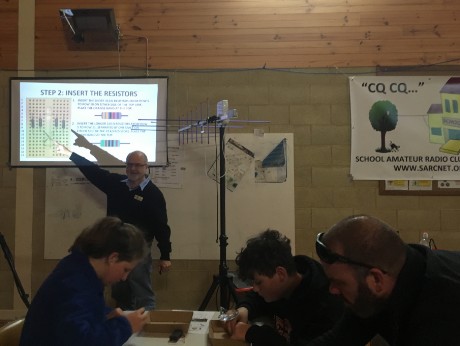
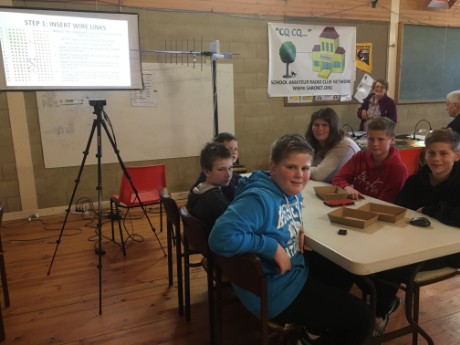
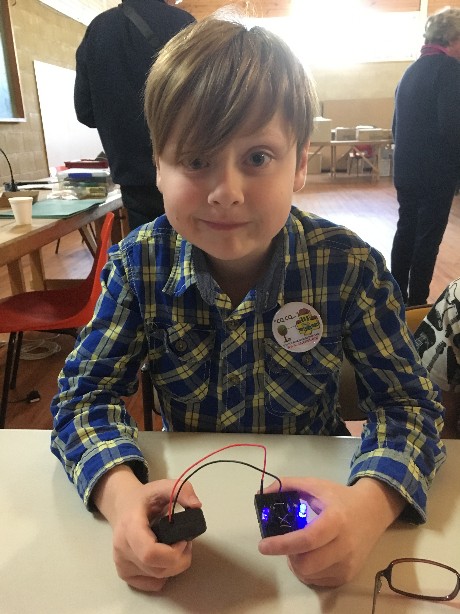
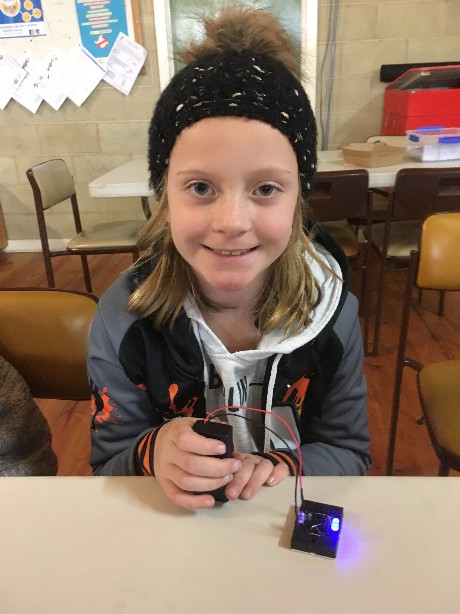
SARCNET @ Bletchley Park, UK
While in the UK, SARCNET could not resist the opportunity to make a pilgrimage to Bletchley Park: The famous home of the World War II Codebreakers, The National Museum of Computing and the Radio Society of Great Britain's National Radio Centre. The once-in-a-lifetime experience would turn out to be the source of a number of new SARCNET presentations and activities - coming soon.
Bletchley Park Mansion was the headquarters of the Government Code and Cypher School. In the surrounding huts, teams of skilled cryptanalysts worked around the clock to unlock the secret codes that were used to encrypt enemy messages.
This is the infamous Enigma Machine with its 159 million, million, million possible settings. The story of the war-time effort to break Enigma and later the even more complex Lorenz cipher is presented in an fascinating array of museum exhibits and displays.
Also located on the Bletchley Park estate, the National Museum of Computing perfectly complements these historical exhibits with accurate and working recreations of the Bombe, Tunny and Colossus machines each used to speed up the codebreaking. Nestled between the two, lies the RSGB's National Radio Centre, where visitors can take a tour of both the history and technology of radio communications. Hands-on exhibits demonstrate the properties and spectrum of radio frequency energy.
A very well equipped Amateur Radio station can be used by visitors to transmit over a variety of shortwave, satellite, voice, Morse Code and digital radio systems.
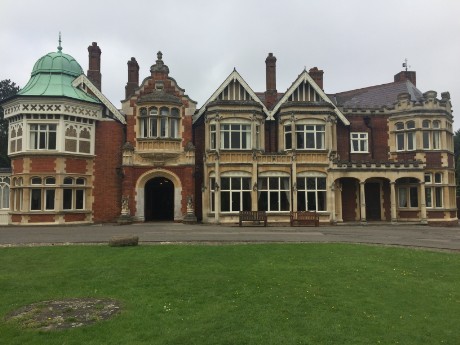
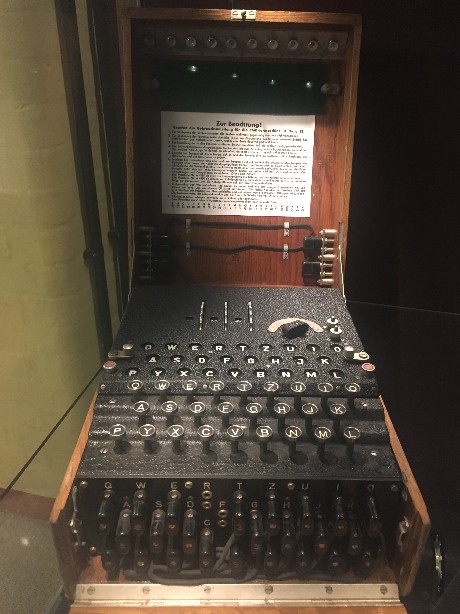
SARCNET @ Margate Lifeboat Station, UK
Meeting with Hilderstone Radio Society chairman, John G7OHO, events manager, Ian G0PDZ, (who is also the lifeboat station deputy launch manager) and members of the St. Joseph's School Amateur Radio Club, we had the privilege of helping to activate the Margate Lifeboat Station for the SOS Radio Week 2018 using the special event call sign GB1RNLI.
In the picture, clockwise around the table, is Zak, Archie, Dahlia, John, Alice, Joe and Julie. The children each received a SARCNET badge and an Electronics Prototyping Kit.
Here is Gracie, Alice, Dahlia's little sister, Dahlia, Ian and Joe. Ian set up a shortwave transceiver operating on the 20m Amateur Radio band. The children we able to tune in a number of stations around the UK and Europe. They even made contact with a station in Spain who was very pleased to work the special event station, GB1RNLI.
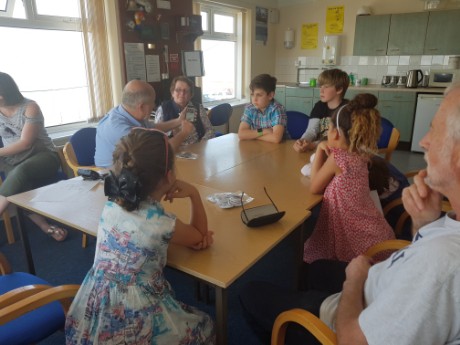
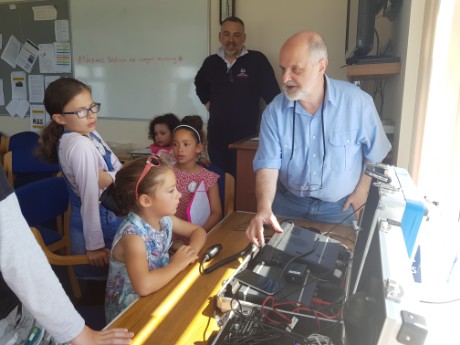
Introducing the STEMettes!
Congratulations to our good friend John Hislop G7OHO for introducing students at St. Joseph's Catholic Primary School in Broadstairs, Kent, England to Science Technology Engineering and Mathematics. Dubbed the STEMettes, this girls-only group of about 12 students, some as young as 8, has been very active in electronics, soldering, Arduino and Raspberry Pi programming. The picture shows top students Freya (with the Astro Pi), Izzy (with the Arduino) and Betty (with the LED Christmas tree) proudly demonstrating their projects. Brimming with confidence, they have already given a very professional talk to the Hilderstone Radio Society G0HRS. We were very pleased to see the girls are all wearing their SARCNET badges. Go girls! We are so proud of you.
John is already planning many new Amateur Radio activities for the group in 2018. To overcome the currently poor HF propagation conditions he hopes to establish a live QSO between SARCNET students in the UK to Australia using Web-SDR stations for receiving. We can't wait to give this clever idea a go, John. There is also the possibility of using the IRLP network and Weak Signal communications. All this emphasizes the importance of digital modes and hybrid technologies - something the students will no-doubt take to like bees to honey.
